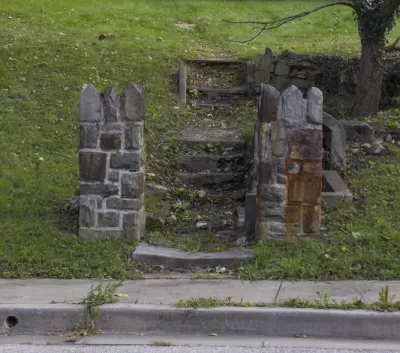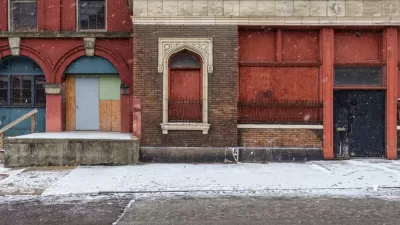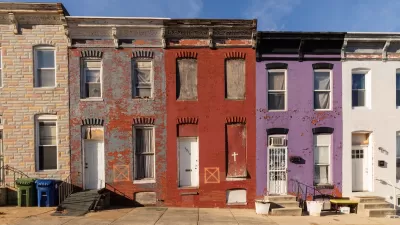As the city of Baltimore grapples with a declining population, it faces obstinate challenges in controlling the problems associated with vacant buildings, including the "vicious cycle" of vacancies causing more vacancies.

"Despite demolition crews working at an unprecedented pace in recent months to tear down Baltimore’s vacant houses, the number of abandoned buildings in the city has barely budged," reports Ian Duncan and Christine Zhang.
"Even as long rows of empty houses are being razed, other homes are going vacant much faster than officials had expected — for reasons they’re at a loss to explain."
In February, the city counted 16,724 vacant buildings in the city. Eight months later, the city counted 16,577. The city had hoped to bring that number below 15,000 by the beginning of 2020, but now it appears that goal is out of reach.
According to city data, the number of vacant buildings in neighborhoods targeted by the city demolition program has dropped, but increasing numbers of vacant buildings in other neighborhoods have kept the overall figures stagnant.
The article includes a description of the "vicious cycle" caused by vacant buildings begetting more vacant buildings, the negative effects of that cycle, and a more granular analysis of neighborhood-level demolitions and vacancies.
FULL STORY: Baltimore is furiously knocking down vacant houses — but barely keeps up as new ones go empty

Planetizen Federal Action Tracker
A weekly monitor of how Trump’s orders and actions are impacting planners and planning in America.

Congressman Proposes Bill to Rename DC Metro “Trump Train”
The Make Autorail Great Again Act would withhold federal funding to the system until the Washington Metropolitan Area Transit Authority (WMATA), rebrands as the Washington Metropolitan Authority for Greater Access (WMAGA).

DARTSpace Platform Streamlines Dallas TOD Application Process
The Dallas transit agency hopes a shorter permitting timeline will boost transit-oriented development around rail stations.

Renters Now Outnumber Homeowners in Over 200 US Suburbs
High housing costs in city centers and the new-found flexibility offered by remote work are pushing more renters to suburban areas.

The Tiny, Adorable $7,000 Car Turning Japan Onto EVs
The single seat Mibot charges from a regular plug as quickly as an iPad, and is about half the price of an average EV.

Supreme Court Ruling in Pipeline Case Guts Federal Environmental Law
The decision limits the scope of a federal law that mandates extensive environmental impact reviews of energy, infrastructure, and transportation projects.
Urban Design for Planners 1: Software Tools
This six-course series explores essential urban design concepts using open source software and equips planners with the tools they need to participate fully in the urban design process.
Planning for Universal Design
Learn the tools for implementing Universal Design in planning regulations.
Municipality of Princeton
Roanoke Valley-Alleghany Regional Commission
City of Mt Shasta
City of Camden Redevelopment Agency
City of Astoria
Transportation Research & Education Center (TREC) at Portland State University
US High Speed Rail Association
City of Camden Redevelopment Agency
Municipality of Princeton (NJ)




























